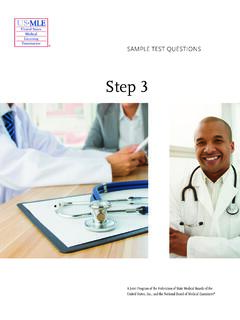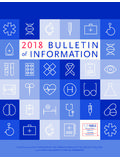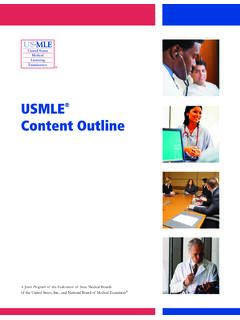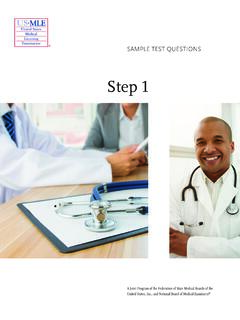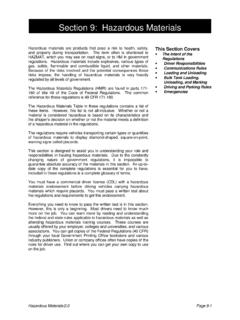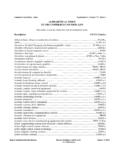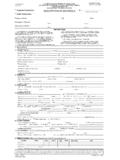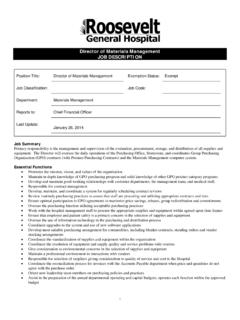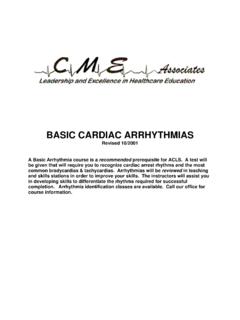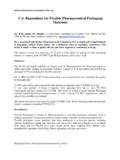Transcription of Step 2 Clinical Skills (CS) - usmle.org
1 Step 2 Clinical Skills (CS)CONTENT DESCRIPTION and GENERAL INFORMATIONA Joint Program of the Federation of State Medical Boards of the United States, Inc., and the National Board of Medical Examiners Copyright 2003-2017 by the Federation of State Medical Boards of the United States, Inc., and the National Board ofMedical Examiners (NBME ). The usmle is a joint program of the Federation of State Medical Boards of the UnitedStates, Inc., and the National Board of Medical Examiners. Portions reproduced with permission from the EducationalCommission for Foreign Medical Graduates (ECFMG ) Clinical Skills Assessment (CSA ) Candidate Orientation Manual, Copyright 2002 by the booklet updated October.
2 3 Step 2 CS Case Development .. 4 Description of the Examination .. 5 Examination Length .. 6 Equipment and Examinee Instructions.. 6 The Patient Encounter .. 6 Physical Examination .. 7 Telephone Patient Encounters .. 8 The Patient Note.. 8 Other Case Formats .. 9 Scoring the Step 2 CS Examination .. 10 Scoring of the Step 2 Clinical Skills Subcomponents .. 10 Step 2 CS Score Reporting Schedule .. 11 Testing Regulations and Rules of Conduct.. 12 Common Abbreviations for the Patient Note .. 13 Appendix A: Common Presenting Signs and Symptoms .. 14 Appendix B: Patient Note Screen.
3 15 Appendix C: Sample Patient Note Styles .. 162 CONTENTSThe United States Medical Licensing Examination( usmle ), through its three Steps (Step 1, Step 2, andStep 3), assesses a physician's ability to apply knowl-edge, concepts, and principles, and to demonstratefundamental patient-centered Skills that are importantin health and disease management and that constitutethe basis of safe and effective patient care. Results of the usmle are reported to medical licens-ing authorities in the United States and its territoriesfor use in granting the initial license to practice medi-cine. The usmle is sponsored by the Federation ofState Medical Boards (FSMB) and the National Boardof Medical Examiners (NBME).
4 Step 2 of the usmle assesses the ability of exami-nees to apply medical knowledge, Skills , and under-standing of Clinical science essential for the provisionof patient care under supervision, and includesemphasis on health promotion and disease 2 ensures that due attention is devoted to theprinciples of Clinical sciences and basic patient-centered Skills that provide the foundation for the safeand effective practice of are two components of Step 2, ClinicalKnowledge (CK) and Clinical Skills (CS). Step 2CK uses the multiple-choice examination format totest Clinical knowledge. Step 2 CS uses standardizedpatients to test medical students and graduates ontheir ability to be patient-centered, to address thediagnostic challenges posed, to prepare the patientfor next steps, and to document the document is intended to help examinees preparefor the Step 2 CS component of the usmle .
5 Personspreparing to take the Step 2 CS examination shouldalso view the orientation video available at theUSMLE website ( ).Information on eligibility, registration, and schedulingis available in the USMLEB ulletin of Information,which is posted on the usmle website. Students andgraduates of international medical schools must alsoconsult the ECFMG Information Bookleton theECFMG website ( ).The information in this document, as well as othermaterials, are available at the usmle in the usmle program may occur after therelease of this document. If changes occur, informa-tion will be posted on the usmle website.
6 Youmust obtain the most recent information to ensurean accurate understanding of current usmle Patient Based ExaminationsThe patients you will see are people trained to portrayreal patients with a Clinical problem. This method ofassessment is referred to as a standardized patientexamination. The standardized patient based testingmethod was established more than 35 years ago, andits procedures have been tested and validated in theUnited States and internationally. When you take the Step 2 CS examination, you willhave the same opportunity as all other examinees todemonstrate your Clinical Skills proficiency.
7 Theexamination is standardized, so that all examineesreceive the same information when they ask standard-ized patients the same or similar questions. An ongo-ing mechanism of quality control is employed toensure that the examination is fair to all. The qualitycontrol approach focuses on consistency in portrayaland scoring of the individual cases, and utilizes bothobservation of live encounters and review of BlueprintAs part of the test development process, practicingphysicians and medical educators develop and reviewcases to ensure that they are accurate and cases represent the kinds of patients and prob-lems normally encountered during medical practice inthe United States.
8 Most cases are specificallydesigned to elicit patient-centered communicationwith methods of data collection that demonstrate theexaminee s ability to relate to the patient and to listand pursue various plausible diagnoses. Other casesare designed to elicit a process of assisting patientswith making decisions and/or with disease or cases that make up each administration of theStep 2 CS examination are based upon an examina-tion blueprint. An examination blueprint defines therequirements for each examination, regardless ofwhere and when it is administered. The sample ofcases selected for each examination reflects a balanceof cases that is fair and equitable across all exami-nees.
9 On any examination day, the set of cases willdiffer from the combination presented the day beforeor the following day, but each set of cases has a com-parable degree of intent is to ensure that examinees encounter abroad spectrum of cases reflecting common andimportant symptoms and diagnoses, as well aspatients with a variety of backgrounds and personali-ties. The criteria used to define the blueprint and cre-ate individual examinations focus primarily on pre-senting complaints and conditions. Presentation categories include, but are not limited to,cardiovascular, constitutional, gastrointestinal, geni-tourinary, musculoskeletal, neurological, psychiatric,respiratory, and women's health.
10 Examinees will seecases from some, but not all, of these categories. Theselection of cases is also guided by specificationsrelating to acuity, age, gender, and type of Step 2 CS administration will include twelvepatient encounters. These include a very small numberof nonscored patient encounters, which are added forpilot testing new cases and other research cases are not counted in determining your A provides a list of common presentingsigns and symptoms that examinees may expect to seeduring an examination. These are examples only, andthe list does not represent all possible presenting signsand symptoms that may be 2 CS CASE DEVELOPMENTWhen you arrive at the test center on the day of yourexamination, bring the Scheduling Permit you receivedafter your registration was completed, yourConfirmation Notice, and an unexpired, government-issued form of identification that includes a photographand signature, such as a current driver's license or pass-port.
